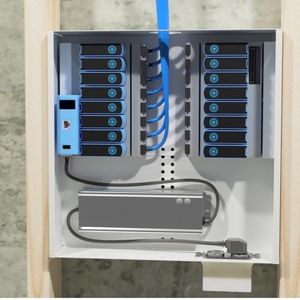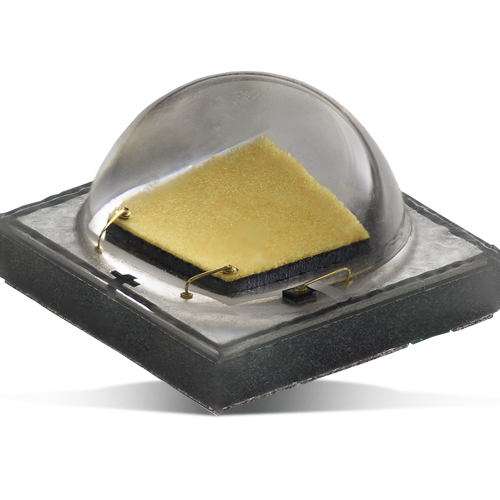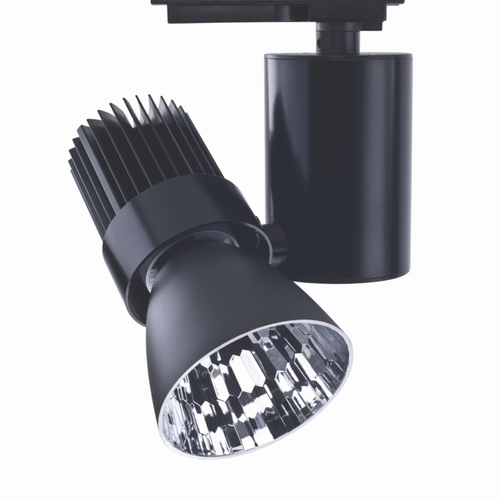
One of the benefits of using light-emitting diodes (LEDs) over conventional light bulbs is that they produce a lot of light without using a lot of electricity. This low current draw, and the possibility of using a low-voltage direct current (DC) circuit rather than a conventional alternating current (AC) circuit, has Caroline Di Diego looking for advice.
“I understand we are still very much in a hybrid AC/DC universe and AC has to exist for kitchen appliances and infrastructure appliances in the utility room,” Di Diego wrote in a 2015 Q&A post. “However, our client wants to take the step into LED.”
At the time, Di Diego was having trouble finding answers to “LED wiring 101” questions about wire gauge options, voltage regulation issues, and other quirks of running DC circuits.
The post is now four years old, but recent additions to this thread, and a surge of interest in the efficiency benefits of LED lighting, suggest the issue is very much alive. Is there anything new to be said about LED lighting and its implications for residential wiring? Let’s find out.
Don’t overthink the problem
There’s no need to do anything unusual for LED lighting, advises Thomas Stone. Don’t overthink the problem.
“My house was built in 1957 and has been converted to nearly all LED lighting,” he says. “What did I have to rewire? Nothing. After some experimentation, I can recommend Cree and Philips as reliable brands, but not the new low price-point versions.”
Charlie Sullivan thinks that’s good advice, and he helps Di Diego sort out the AC/DC current question. “Although inherently LEDs run on DC, the high-quality end-use products are all made to run on AC,” Sullivan says. “The current draw on an LED light on an AC circuit is small, so…
Weekly Newsletter
Get building science and energy efficiency advice, plus special offers, in your inbox.

This article is only available to GBA Prime Members
Sign up for a free trial and get instant access to this article as well as GBA’s complete library of premium articles and construction details.
Start Free TrialAlready a member? Log in















19 Comments
It is strange there is no mention of USB throughout. The newest USB standard supports up to 100 watts (20V at 5 amps), and is the standard used for a good portion of consumer electronics. The technology is also rapidly improving, and I expect to see 24V (120 watts) supported in the near future, and eventually far more. Since the cable also includes the capacity for data transfer, it can be used to deliver variable amounts of power depending on the device (assuming the device supports it). I'm not big on the whole "smart house" thing (at least, not the current fashion of insecure devices owned and controllable by a third party spying on you for advertisers), but if that nonsense catches on, even silly things like light bulbs and refrigerators will have a use for that data connection.
While it is far from practical to wire a house using the latest standard of USB cable today, in a future where DC is more prominent I fully expect it to be the standard for power delivery. After all, there are already power outlets with built in USB ports available.
Doing such low bandwidth communications over wire is dead - it will all be wireless. It's already sometimes more cost effective to use wireless for control (vs long runs of 14 gauge copper). $6 for my most recent wifi power switch. Not to mention that people are going to increasingly expect to say "turn on outside lights" from almost anywhere vs finding the right light switch.
You are correct, wireless is most definitely here to stay. But if a hard data connection is already there for things like power management, I'm sure they'll find a use for it.
What does the code book say?
I do not have it memorized but though there were some class 2 limits less than 50 Volts, 2 Amps and 100 Watts
Are there UL listed DC panels?
Walt
I'm currently looking at 24VDC on local (room level or few rooms) distribution basis. At least for lighting and some building automation purposes. That seems to strike the best balance between safety, reasonable resistance losses, usefulness, available equipment, and cost. It's common in industrial automation, passive POE, and is used by EMerge's Occupied Space Standard (for offices). I believe class 2 circuit limits allow for 4 amps (100 watts). Not massive, but useful for all sorts of low voltages purposes, and can be utilized regardless of what direction various standards go.
48 volts and higher power limits would probably end-up needing some type of negotiated power delivery, like POE or USB-PD. That's going to be much more expensive, more fragile, and more likely to be obsolete on a much shorter time frame than would be reasonable for residential construction. Because of that, it's going to be at least 50 years before it would move into residential.
That's not to say I'm against using POE for something like security cameras, or have a number of USB-PD outlets. Just that it wouldn't be built into the backbone of a typical house.
Regarding wireless control, I suspect you'll see a lot more hard-wired connections than you might be expecting. I'm sure wireless will be mixed in, but when things go mainstream, it needs to work reliably for more than 20 years without it all being ripped out and scrapped.
I've had WIFI for over 20 years (first access point cost me $1500 :-( ), and I regularly update my router and lots of other equipment. I have a couple of dozen LIFX bulbs, POE switches, Kevo, Alexa, and a mix of random bits and pieces. Nothing is ever as reliable as it needs to be. It all needs to be periodically updated or replaced. This is not the future for most people.
Sub-system communication using something RS485 based seems reasonable. Maybe DMX for local lighting control? Ethernet / WIFI makes sense when coordinating major sub-systems, but I would never want any shared network involved in critical communication (like a make-up air damper tied to my range hood).
I don't know what any codes say about it, but I wouldn't try to pass 4A down an ethernet cable. Even if you used two pairs of 23AWG, the voltage drop for a 30' run would be over 10%. I think the heat generated would be substantial. POE is typically for low power applications, like a phone or camera, maybe a single light, not general lighting.
Yep. For 24VDC, I'd think more 12 or 14AWG, just like typical AC wiring. Martin's 10AWG certainly makes sense given that he's using 12VDC.
POE++ apparently goes up to 100 watts (at 48V), but I believe that uses 4 pairs of wires. Ubiquiti is pushing their UniFi LED system that uses POE for general lighting. I'm not a fan of the idea.
I guess if Edison and Tesla sparred over whether AC or DC was the better approach, then we are in good company if we do the same. I frankly don't see the big advantage right now to wiring a house with DC at all. For most of us we want to be able to plug in a vacuum cleaner or blow dryer in most any room. The AC wiring accommodates these power-based devices quite well and many motors get their rotation from the rotating magnetic field produced by AC applied to the stator coils. Electronic stuff (where electricity carries information) all runs on DC. But at what voltage? Your computer alone has several different DC voltages inside. Other electronic gadgets run at differing voltages. So DC wiring would require converting from one voltage to another. Of course this can be done, but then why not just skip the DC wiring and just convert AC to DC? Probably costs about the same and is equally efficient using switching power supply designs and with very low standby power. As we build our new house this year, unless someone comes up with some really convincing arguments, I'm still going with the typical AC outlets everywhere because I can get anything to work with that. There may be all kinds of DC devices coming out now and in the future, but i'd be concerned as to which ones will still be around in 15 years. I'd rather not wire for DC and then find the industry ultimately didn't adopt the same standards that I did.
When the article talks about "transformers" I hope it is not referring to the simple DC power supplies that simply use a transformer and a rectifier circuit. I hope it refers to switching type power supplies that convert from AC or DC to whatever you need on the output. These supplies still use transformers but generally much smaller and lighter than the old linear supplies because they use a completely different methodology to generate the desired output voltage. As far as I understand energy regulations are tight enough now on "wall warts" that the simple linear supply no longer is manufactured because it's not as efficient, both in operation and in standby.
Where are the battery powered lights with remote switching when you need them? I'm hoping that in the short term there will be battery powered lighting that you peel and stick anywhere with no need for wiring at all. It seems to me that with incandescent lighting I had to replace bulbs every couple of months or so. Obviating the need for wiring in the ceiling would be worth the extra effort needed to replace or recharge batteries.
I tested a bunch of bulbs (Cree, Philips, IKEA). I was particularly interested in warm dimming (color temp warms as light dims. Surprisingly, the best bulb I found was IKEA. One thing you have to remember in any case is to adjust the dimmer settings.
Stick with the standard medium Edison base and candelabra base sockets with 120 volt ac for lighting. There is over 100 years of installed fixtures. They are not going to change anytime soon. They started for incandescent bulbs, they handled cfl's just fine and if you have looked at your local big box store, there are now a myriad of LED bulbs using those two standards. If in ten years, there is a new lighting technology, that can be screwed in to the same fixtures, whether they are brand new or over 100 years old.
The circuitry to convert ac to the appropriate dc voltage is included in LED light bulbs that sell for a buck or two. providing dc voltage would require similar circuitry if the voltage provided did not match the requirements of the lighting device and is not a standardized item on the shelves of every store selling lighting products. The only readily available lights using dc is LED tapes and ropes which normally are used in only a few limited places.
Still in doubt, think of the hassle of finding bulbs for fixtures that use specialized fluorescent or halogen bulbs.
I'm interested in converting knob and tube overhead lighting to 12VDC using (attention Kurt) Edison-base LED bulbs that I believe are for boats. There are many 12VDC Edison bulbs on Amazon, though I've never heard of any of the brands for interior lights (e.g. Ashalight, Petronius, Tento...). There's one by Feit that might be OK for outdoor, named as a pool/spa light.
It seems to me that the old knob and tube wiring gauge would be sufficient to handle current for LED lighting only, though I suppose I should pencil that out and I haven't yet. Also, it would need overcurrent protection in case someone screwed in the wrong thing, not sure how I would do that. There is also the matter of ensuring that the 12V circuit is in fact isolated from the 120 (I found a neutral the other day that's looped into the overhead circuit from somewhere else...)
Well, I haven't moved forward with the 12V idea yet, but I wanted to pipe in that for overhead lights only, it might make it easier and safer to insulate above the ceiling. Seems to me people used to insulate over knob and tube without worry. But now they worry and don't do it. I suppose it's not a problem with the original wiring, it's that over the years people have modified that wiring, I can see some of that has happened.
David,
I agree with Riley (who answered below). Stick with one voltage -- 120 volts AC.
Remember, exposed 12 volt wiring is still dangerous -- crossing two connectors can still cause a spark and a fire.
I agree with Kurt H. Personally unless you are completely off grid, I see no purpose in having DC branch circuit wiring for anything at all. Stick with the AC. Products that are readily available and the industry support will always be there (e26 bases etc.) Until Tesla's dream of wireless electricity becomes a reality there will be no dramatic changes in how we wire our houses, everything else will just be a fad and waste of money. As for control, "smart" systems, internet, go with CAT7 cable, ethernet jacks and switches. The speed & volume of traffic capability cannot be matched by wireless (yet) and industry support is consistent.
“[Deleted]”
A company called ATXled.com was promoting 48V DV lighting at the National Home Builders Show. Impressive team behind the product. Is anyone familiar with the company or know of other companies behind 48V DC lighting?
Douglas, in recent years there were various initiatives very similar to ATXled (that is, they likewise relied on power over Ethernet for juice). Most of these efforts seem to have dried up or are operating at a reduced level of activity. The companies I was looking at mainly Philips, NuLEDs, and Innovative Lighting. Cisco was also promoting it and installed it in their Canadian HQ as a showcase. LEDs Magazine was one of the most accessible sources for following these stories. Even though there hasn't been much news - I thank you for that item, it's interesting to me - there are a good number of compatible routers in buildings. I suppose commercial building tenants and developers have run into a tangle of obstacles related to cost, technology, and innovator's dilemma. I hope the best for co's like ATXled because I happen to know some good fire code went into power over Ethernet and when it's done right it's safer not more dangerous. As for reliability, Blue Cross reportedly relies on PoE for keeping the lights on in its disaster recovery center in Reading PA, I think you could google for that article. But there aren't great business cases to do power over Ethernet right now, just a few showcases and special cases like that as far as I can tell. Real innovators have to pencil it out and take risks.
And yet. People on ships and boats don't necessarily use 120 VAC for general illumination. 12V E26 socket A19 bulb shape warm white or cool white LED is a thing. Another thing is 12-24V for doorbell, thermostat, sprinklers snaking around people's houses every which way that they're not remotely aware of. And I'll leave you with this. Fire code didn't even matter that much to PoE until people asked to have great big bundles of the stuff penetrating walls. Then they had to spec it out and I would expect or just want an engineer to detail it. If you don't have big bundles and qualified people are on the job of course low voltage is safer. There's a reason the NEC requires electricians to do 120V work but not to install 12v garden sprinklers. And of course 120V has nothing whatever to do with how an LED works.
David,
Thanks for your insightful comments. And I just checked LED's Magazine and found a couple of spot on articles and a podcast to listen to. Thanks!
Doug
Log in or become a member to post a comment.
Sign up Log in